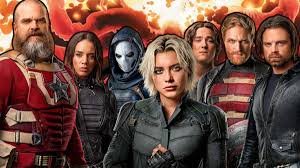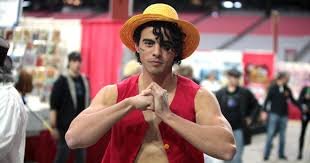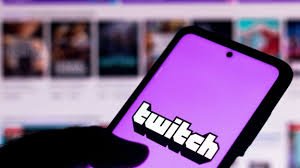
void marvel
The Void is one of the most fascinating and terrifying entities in the Marvel Universe, introduced as part of the complex mythology surrounding the superhero known as Sentry. First appearing in Sentry #1 in the year 2000, this dark counterpart was crafted by writer Paul Jenkins and artist Jae Lee. The Sentry, whose real name is Robert Reynolds, was created as a hero with the power of “a million exploding suns.” However, his story is incomplete without acknowledging the Void, a sinister alter ego that mirrors his abilities but channels them into destruction and fear. The origins of the Void are deeply tied to Robert Reynolds’ own fractured psyche. In the narrative, Reynolds is a man who once consumed a secret experimental serum that gave him his god-like powers. However, this same event also unleashed a darkness within him — the Void — representing all his hidden fears, guilt, and destructive impulses. This duality makes the Void not just a villain, but a symbolic embodiment of the hero’s inner demons.
Nature and Powers of the Void
The Void possesses identical powers to the Sentry, including superhuman strength, speed, flight, energy projection, and near invulnerability. What sets the Void apart is his approach to using those powers. While the Sentry uses his abilities to protect, the Void uses them to inflict chaos and suffering. The Void can manipulate darkness, create massive tendrils of shadow, and instill overwhelming fear in anyone he faces. His powers also appear limitless in certain interpretations, often adapting to counter any threat. In many storylines, the Void seems immortal — whenever he is defeated, he somehow returns, either from within the Sentry or from some other plane of existence. This makes him one of the most dangerous adversaries in Marvel history, as killing him is not a permanent solution.
Psychological Symbolism and Themes
The Void is more than just a supervillain — he is an allegory for mental illness, self-doubt, and the destructive tendencies that lie within even the noblest individuals. In Robert Reynolds’ case, the Void represents all the guilt, shame, and unresolved trauma that he suppresses. The constant battle between Sentry and the Void can be seen as a metaphor for the human struggle to control one’s darker instincts. This theme resonates with readers because it reflects real-life internal conflicts. People often wrestle with their own “inner void” — fears, regrets, and destructive habits — that can threaten to overshadow their better selves. The Marvel writers have intentionally blurred the line between hero and villain in this dynamic, making it one of the most psychologically complex relationships in comic book storytelling.
Key Story Arcs Involving the Void
The Void has been a central figure in several major Marvel events. In the Sentry limited series, we learn that every time Sentry tries to act as a hero, the Void appears to counterbalance his actions with destruction. This leads to one of the most tragic realizations in the Marvel Universe: for the world to be safe, Robert Reynolds must erase himself from existence, along with the memory of the Sentry, to also erase the Void. In Dark Avengers, the Void plays an even greater role. Norman Osborn, as the leader of the Dark Avengers, manipulates the Sentry, and in doing so, indirectly unleashes the Void’s full potential. The Siege storyline is perhaps the most devastating showcase of the Void’s power, where he becomes a cosmic-level threat capable of laying waste to Asgard itself. Another critical arc is in Age of the Sentry, which explores alternate realities and the ways in which the Void manifests differently depending on the timeline. In each version, the underlying truth remains the same: the Void is inseparable from Robert Reynolds, and any attempt to destroy him means destroying the hero as well.
The Void’s Place in the Marvel Universe
In terms of raw power levels, the Void is among the top-tier threats in Marvel Comics, comparable to beings like Galactus, Dormammu, or even the Phoenix Force. However, his uniqueness lies in his origin — he is not an external cosmic entity but the dark mirror of a single man. This makes him an enemy that cannot be defeated simply through physical force or magic. Various heroes, including the Avengers, the X-Men, and the Fantastic Four, have faced the Void, and each encounter demonstrates that strategies relying solely on strength are doomed to fail. This is why some fans compare the Void’s threat level to that of villains such as Thanos — not because they share the same goals, but because of their capacity to alter the fate of the Marvel Universe on a massive scale.
The Sentry-Void Duality
Perhaps the most haunting aspect of the Void is that he and the Sentry are truly two halves of the same being. This duality creates a paradox: to destroy the Void is to destroy the Sentry, and vice versa. In some storylines, Robert Reynolds has attempted to suppress the Void using powerful mental blocks, magic, or even cosmic-level technology. But every suppression comes with consequences — when the Void eventually returns, he is often more dangerous than before. This relationship also questions the nature of identity and morality. If the Void is simply the darker aspect of Robert, does that mean the Sentry himself is capable of those atrocities? The Marvel writers leave this deliberately ambiguous, adding layers of complexity to the character.
Memorable Battles and Consequences
The Void’s battles are legendary for their sheer scale and emotional weight. In Siege, his transformation into a monstrous entity capable of tearing through gods and demigods alike shocked both heroes and readers. Thor himself needed to unleash his full might to even slow the Void down. In other encounters, the Void has dismantled entire superhero teams in minutes. The aftermath of these battles is always devastating — cities left in ruins, heroes traumatized, and Robert Reynolds once again burdened with the knowledge that his existence is a danger to everyone around him. This tragic cycle reinforces the inevitability of his struggle: no matter how many times he saves the day, his shadow will always be waiting to rise.
The Void in Alternate Media
While the Void’s appearances have mostly been confined to the comics, there is ongoing speculation about his role in future Marvel Cinematic Universe (MCU) projects. Given the growing interest in darker, more psychological superhero narratives, the Void is a prime candidate for adaptation. Some fans theorize that if the Sentry appears in the MCU, the Void will inevitably follow, offering a villain unlike any other — one who is not a separate person but a manifestation of the hero’s own mind. The potential for visual storytelling here is immense, as the Void’s shadow-based powers could create some of the most visually haunting scenes in Marvel film history. Outside of the comics, the Void has been referenced in video games and fan discussions on platforms like Fandom, where his lore continues to expand through fan theories and speculative “what if” scenarios.
Legacy and Impact on Marvel Storytelling
The introduction of the Void changed the way Marvel could explore the concept of heroism. No longer was the greatest threat always an external force; sometimes, the biggest danger was what a hero carried inside. This thematic depth made the Sentry-Void dynamic stand out among other superhero-villain relationships. The Void’s ability to physically challenge even the most powerful heroes while simultaneously attacking them psychologically ensures his place in the pantheon of Marvel’s greatest antagonists. In many ways, the Void paved the way for more nuanced villains in modern comics — antagonists who are not evil for the sake of being evil, but rather are complex, multi-layered, and often sympathetic in their origins.
Conclusion: The Eternal Struggle
The Void is not just another Marvel villain; he is a chilling reminder that sometimes the hardest battles are fought within. His existence forces heroes and readers alike to confront uncomfortable truths about the nature of good and evil, light and darkness, and the fragility of the human mind. Whether he appears in comics, potential films, or fan interpretations, the Void’s legacy is secure as one of the most psychologically compelling figures in Marvel history. His story will always be intertwined with that of the Sentry, ensuring that their battle — both physical and internal — remains one of the most memorable in all of superhero fiction.






